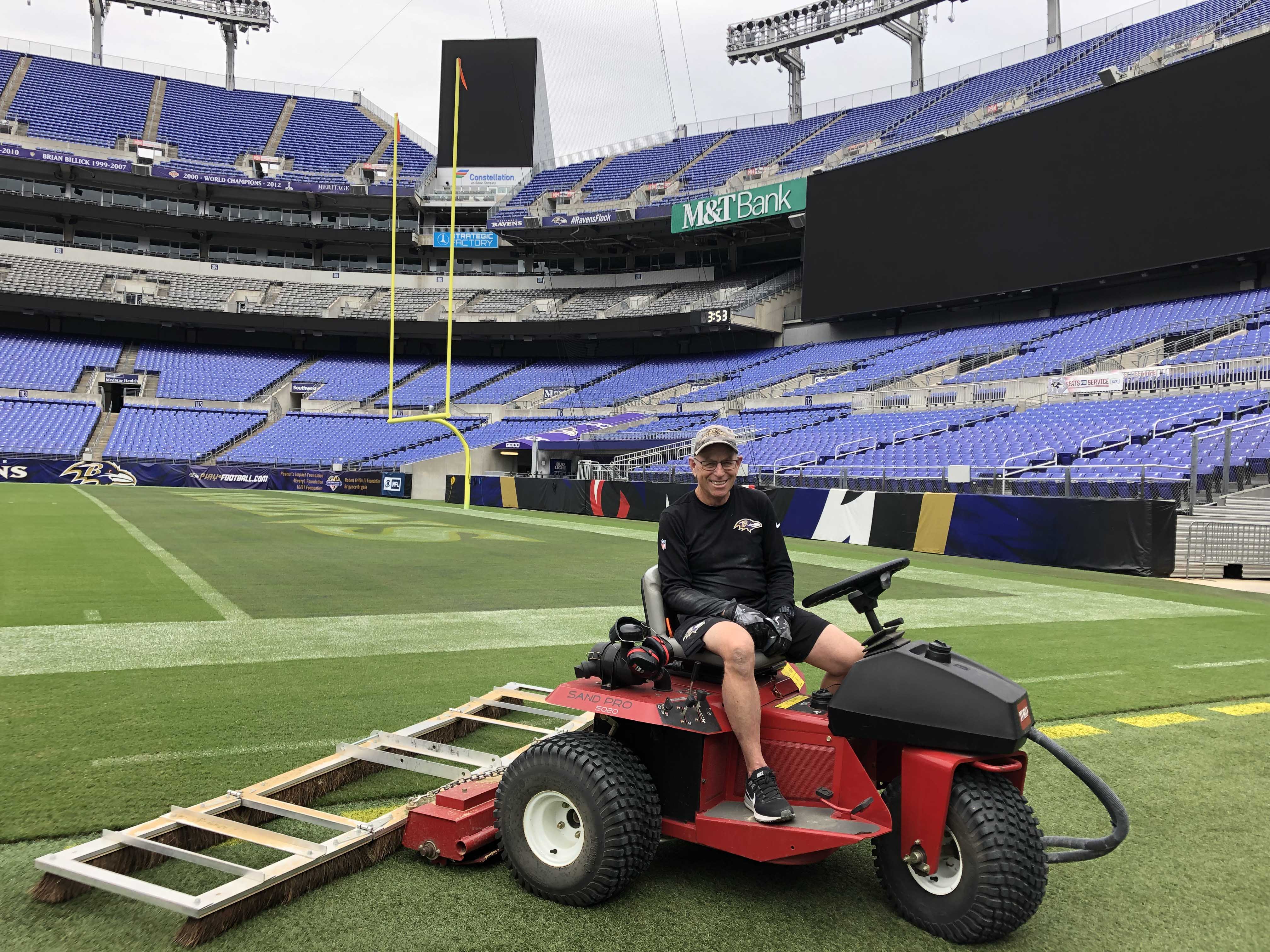BALTIMORE — During the baseball season, the weather radar is Nicole Sherry’s steadfast companion. It’s the last thing the Baltimore Orioles head groundskeeper checks before bed. When she wakes up, she reviews it to be sure nothing has drastically changed overnight.
“I have a plan A, B, C, D, E, F, you know?” Sherry said. “We’re always willing to adjust and ready to adjust at a moment’s notice.”
Those plans aren’t just for the next game. They’re for the coming years.
As extreme weather increasingly poses challenges in Baltimore, groundskeepers in the city are looking ahead at ways to address climate change, be it through heat-tolerant grasses or sophisticated drainage systems.
In 2018, Baltimore saw 72 inches of precipitation, the most ever on record — “It was awful,” Sherry recalled. This year, temperatures in the city reached 90 degrees for 11 straight days, and there were weeks without rain.
All the while, average temperatures have climbed in the city over the last century, with a 3.5-degree increase since 1895, according to a CNS analysis of data from the National Centers for Environmental Information.
“There’s been a big difference” Sherry said. “If it’s going to be 115 now on the field, whereas 10 years ago, the hottest we had was 100 degrees, then definitely I start planning for the future.”
Erratic weather has proved a problem for the Baltimore Ravens and their groundskeeper Don Follett — from getting enough workers to combat rainy days to replacing worn-out equipment.
And then there’s the turf. One of the biggest worries for groundskeepers is how to keep the grass healthy — especially in Baltimore.
Murray Cook — president of the sports turf division of BrightView, MLB’s official field and stadium consultant — said living in the Mid-Atlantic presents a host of complications for any groundskeeper. “It’s probably the most difficult area to grow grass in these areas, because you have to deal with a really cold winter … [and] a super hot summer,” he said.
Baltimore groundskeepers have different approaches to fighting that difficult climate.
In M&T Bank Stadium, the Baltimore Ravens use Bermudagrass, which is friendly to the heat but requires overseeding with ryegrass to keep its color in the colder months.
Just a few streets over at Oriole Park at Camden Yards, they use Kentucky Bluegrass, one of the best strains to survive both heat and cold, but grass that Sherry said she needs to “baby” to get through the hottest months.
Then, there are the frequent rainstorms, which can mean postponements, tarp pulls and other complications, especially for baseball teams with all-dirt infields. There’s also the injury risks surrounding puddling and slick bases.
According to Major League Baseball data, weather postponements across the country reached a nearly 30-year high in 2018, with 54 games affected by weather. This season ended with fewer delays.
The Orioles were tested in August, when 5 inches of rain doused the stadium in an hour. Sherry said the crew cleared standing water in the outfield and the team played 30 minutes later. But even with a sophisticated drainage system, the grass and drainage system below the turf can only absorb a limited amount of water in a short period. Sometimes it’s still a waiting game.
At Camden Yards, the drainage system can clear about 16 inches an hour. M&T Bank Stadium’s system can likely handle about 15 inches, about 6 inches less than it could handle after being initially installed, as time wears down its capacity.
During rainy spells, Follett said he needs to bring in more workers to handle a heavier tarp.
“You budget for the worst-case scenario. You budget for extra manpower to put the turf cover on and off,” Follett said.
He said it takes 10-to-15 men to roll out the covering and 20 to remove it after the rainfall weighs it down. Sherry equips her team with about 26 people to handle the tarp — rain or no rain.
“On a five- or eight-year cycle, you’ve got to buy a new rain tarp,” Follett said. “It’s getting worn out ‘cause it’s getting used so much. In the past, we could go 15, 20 years before we even need to think about a new rain tarp. Now, we might have to get a new rain tarp in the next couple years because we’re putting it out so much.”
Sherry and Follett say the weather is certainly making their jobs more difficult. They do all they can to prepare, but say there’s a point where too much is out of their control.
“It’s a real finicky balance,” Sherry said, “and it’s stressful. And you can just kind of do what you can. But at the end of the day, sometimes Mother Nature wins.”

